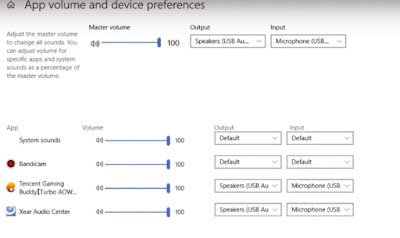- Google Drive
- Dropbox
- From URL
How to Make an MP3 Louder with Free MP3 Volume Booster Software. If you want to increase MP3. When volume limits are exceeded, as possible with this extension, speakers can fail. I've used this extension for years without any speaker damage by limiting the increase of volume to just below a point where sound distortion is heard. Running the volume up to maximum on this extension will damage your speakers over time or sooner.
Your search for a free sound booster for Windows 10 may come to an end with this.
Download Increase Volume Louder Speaker for PC to install on Windows 10, 8, 7 32bit/64bit, even Mac. The weight of the apps is 2.2 MB. On the latest update of the Increase Volume Louder Speaker app on lmt-post-modified-info, there are lots of changes that are properly enjoyable on the Computer, Desktop & Laptop. How to Increase Volume of a Video Using the Filmora Video Editor. Import video to the video editor. First, you need to launch this program on Mac (10.13 High Sierra included). Go to the 'Full Feature Mode' and click the 'Import Media' to select the video from.

Increase Mac Volume Free Download

Disk Utility User Guide
Apple File System (APFS) allocates disk space on demand. When a single APFS container (partition) has multiple volumes, the container’s free space is shared and can be allocated to any of the individual volumes as needed. Each volume uses only part of the overall container, so the available space is the total size of the container, minus the size of all volumes in the container.


On your computer, macOS is installed on a set of volumes known as a volume group. The volume group consists of one volume used for the system files (named Macintosh HD) and another volume used for data (named Macintosh HD - Data).
Add an APFS volume
Each volume you add to an APFS container can have a different APFS format, if needed.
In the Disk Utility app on your Mac, select an existing APFS volume in the sidebar, then click the Add Volume button in the toolbar.
If Disk Utility isn’t open, click the Launchpad icon in the Dock, type Disk Utility in the Search field, then click the Disk Utility icon .
Enter a name for the new APFS volume.
Click the Format pop-up menu, then choose an APFS format.
If you want to manually manage APFS volume allocation, click Size Options, enter values in the fields, then click OK.
Reserve Size: The optional reserve size ensures that the amount of storage remains available for this volume.
Quota Size: The optional quota size limits how much storage the volume can allocate.
Click Add.
When the operation is finished, click Done.
Delete an APFS volume
When you delete a volume, all the data on the volume is permanently erased, and the volume is removed from the container.
In the Disk Utility app on your Mac, select the APFS volume you want to delete in the sidebar.
If Disk Utility isn’t open, click the Launchpad icon in the Dock, type Disk Utility in the Search field, then click the Disk Utility icon .
Click the Delete Volume button in the toolbar.
If the Delete Volume button is dimmed, the selected volume can’t be deleted because it’s in use. To delete the volume, you need to open Disk Utility in macOS Recovery. See the Apple Support article About macOS Recovery.
Do one of the following:
If the APFS volume you want to delete is a member of a volume group, click the Delete Volume Group button to delete all volumes in the group, or click the Delete button to delete only the selected volume.
Click the Delete button to delete the selected volume.
When the operation is finished, click Done.
Erase an APFS volume
Volume Down On Mac
When you erase a volume, all the data on the volume is permanently erased, and the empty volume remains in the container.
In the Disk Utility app on your Mac, select the APFS volume you want to erase in the sidebar.
If Disk Utility isn’t open, click the Launchpad icon in the Dock, type Disk Utility in the Search field, then click the Disk Utility icon .
Click the Erase button in the toolbar.
If the Erase button is dimmed, the selected volume can’t be erased because it’s in use. To erase the volume, you need to run Disk Utility in macOS Recovery. See the Apple Support article About macOS Recovery.
Enter a new name for the volume, if desired.
If you want to change the format, click the Format pop-up menu, then choose an APFS format.
Do one of the following:
If the APFS volume you want to erase is a member of a volume group, click the Erase Volume Group button to erase all volumes in the group, or click the Erase button to erase only the selected volume.
If the APFS volume you want to erase isn’t a member of a volume group, click the Erase button to erase the selected volume.
When the operation is finished, click Done.
Increase Macbook Volume
You can’t delete or erase your startup volume. See Erase and reformat a storage device.